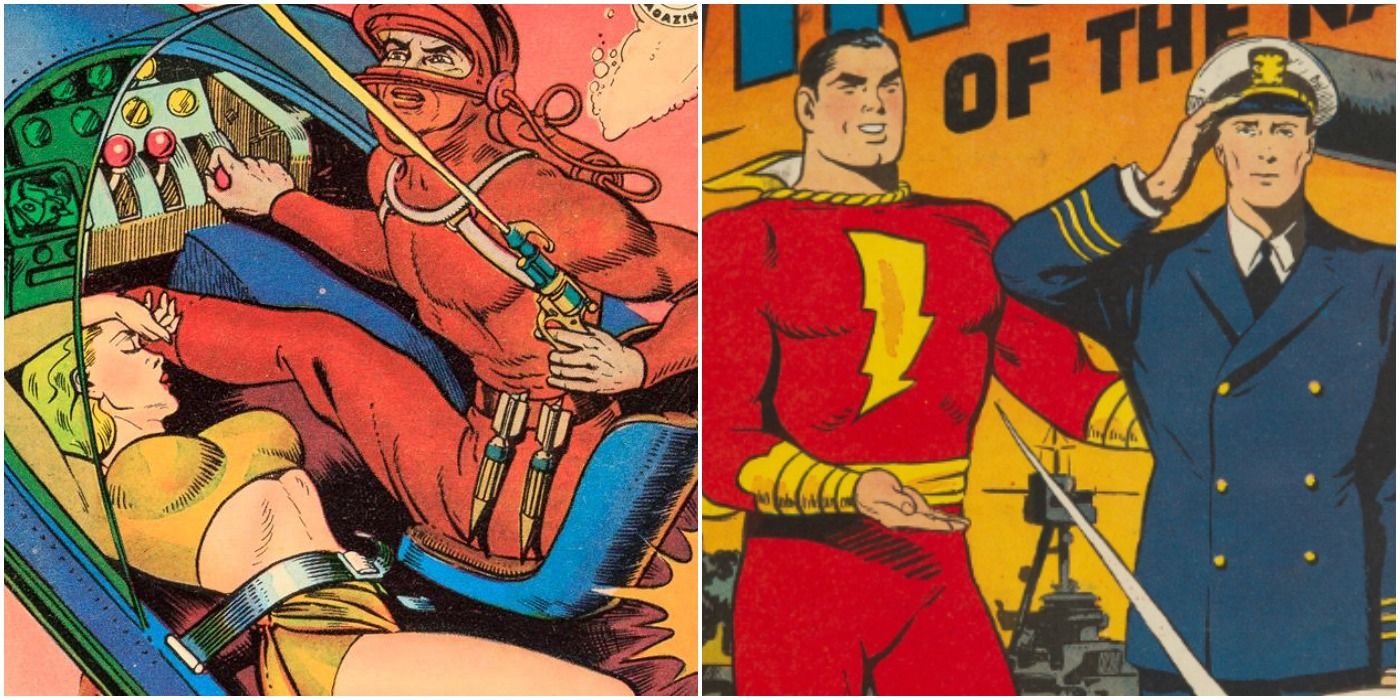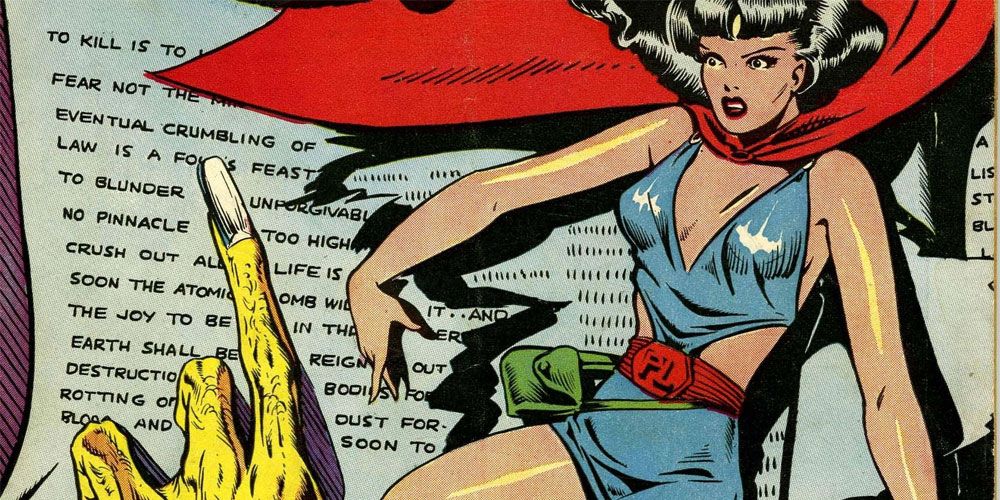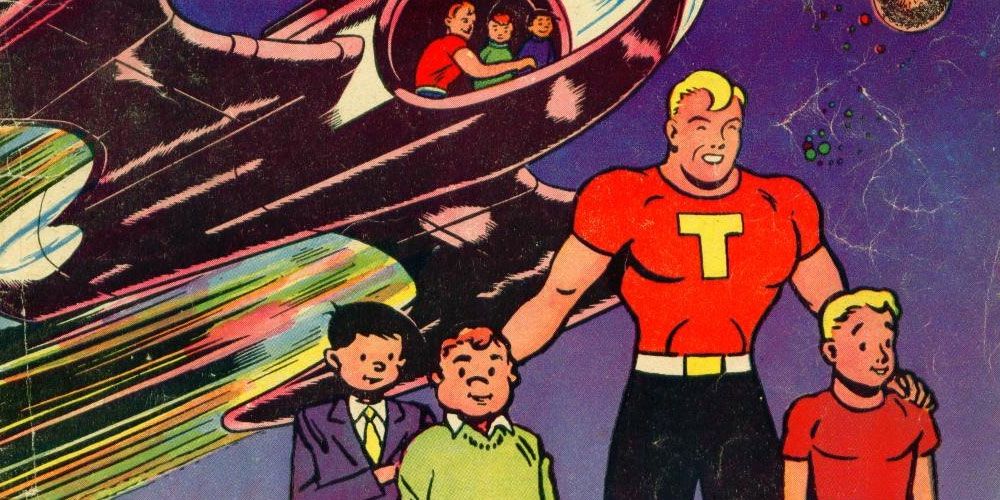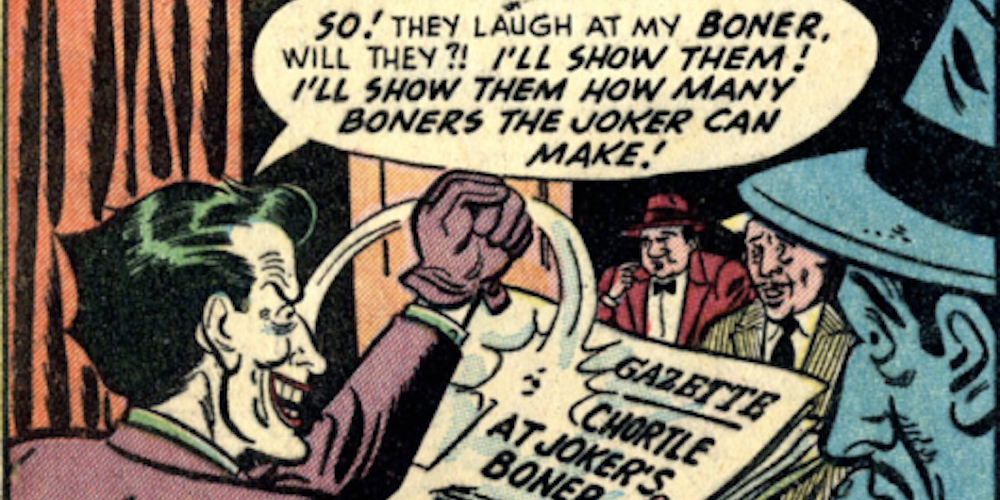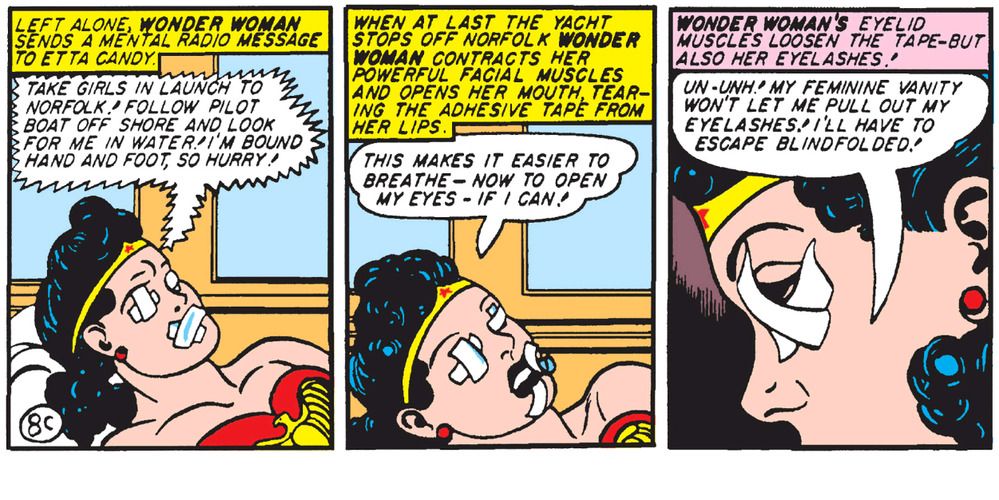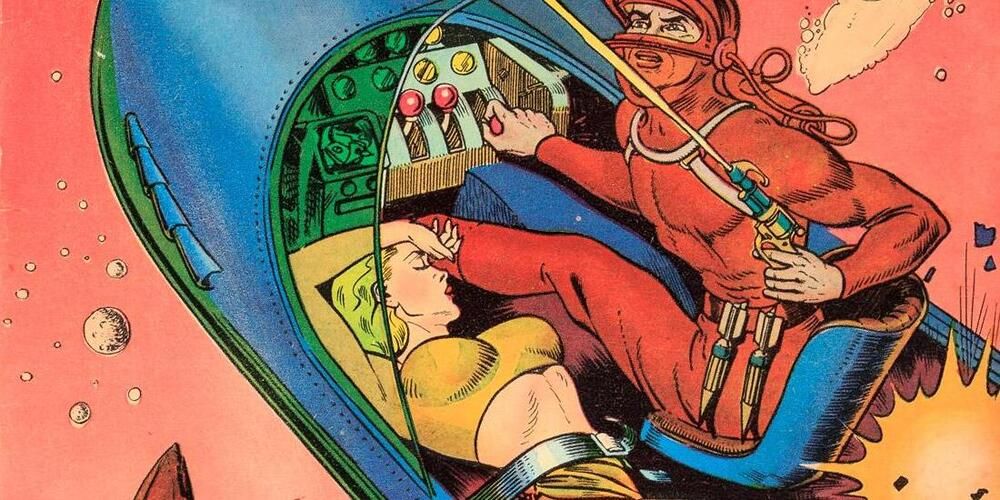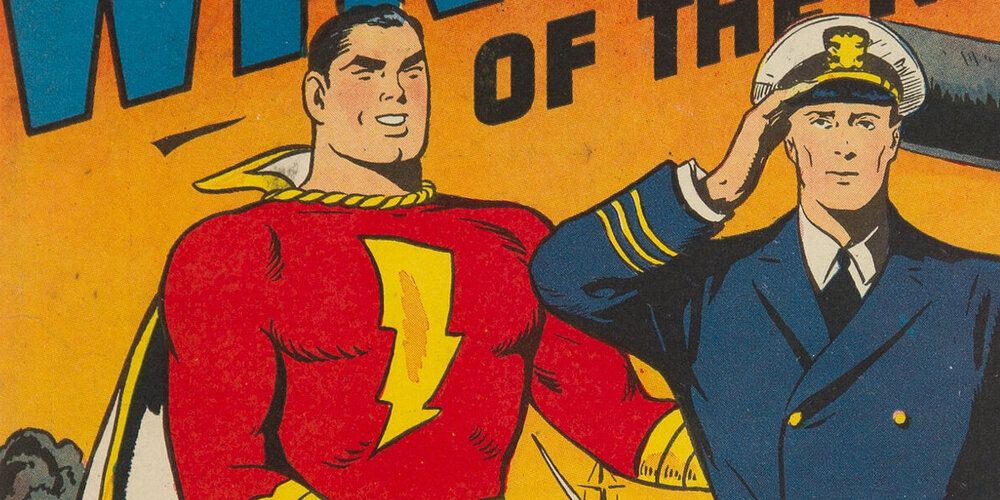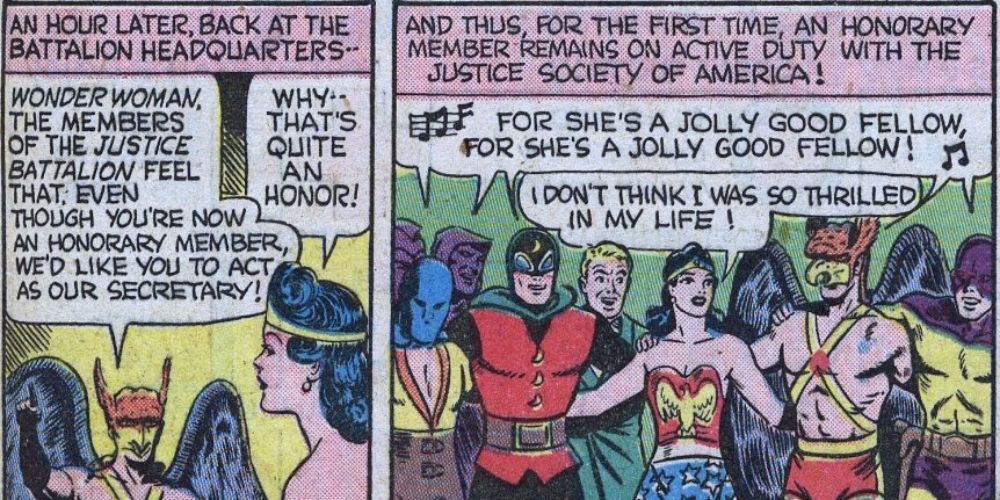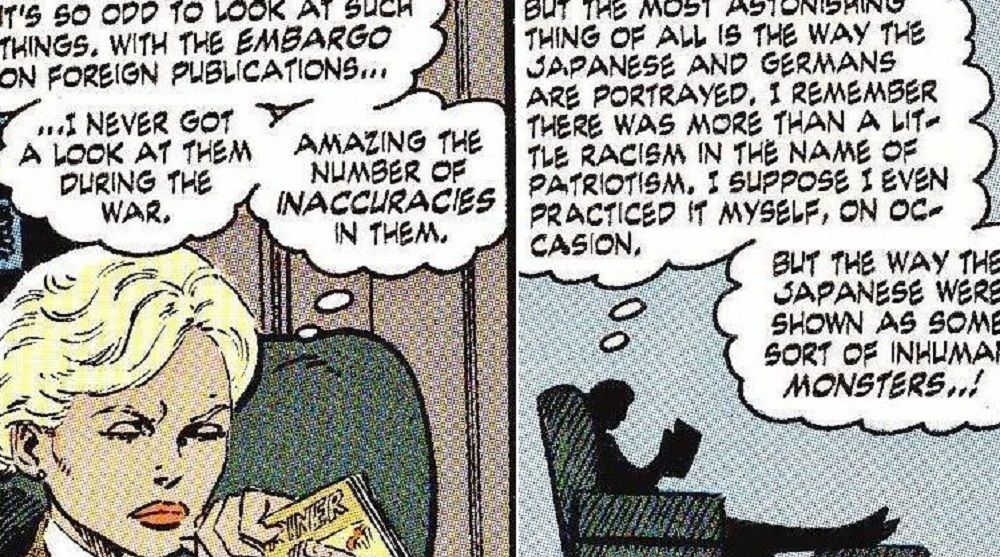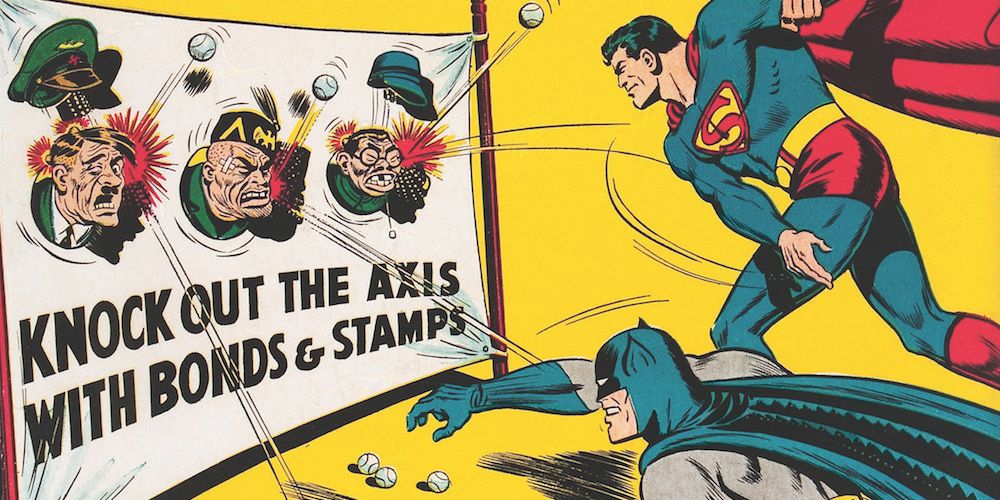The Golden Age of comics was a time where the techniques and tropes of storytelling were being worked out. Sometimes these efforts generated gold. A lot of the time, it was a series of stumbles on the way to what we recognize today as the art form of comics. No publisher was free of sin when it came to things considered unacceptable today.
However, no form of art or literature exists in a vacuum. They are the product of a society that is changing, hopefully for the better. Many of the things Golden Age comics included simply wouldn't fly today. Just as cartoons and other media of the time are not replayed, the most egregious examples of this horrible caricature are not included in digital venues like DC Infinite and Marvel Unlimited.
9 Phantom Lady's Costume Design Was Controversial Even When It Was Published
Her covers were seldom pertinent to the story, and her costume became more and more revealing until she was curtailed by the pressure of the nascent Comics Code Authority. By the time DC Comics claimed her, It could be rendered in a way that wasn't nearly as salacious.
Artist Matt Baker pushed the limits of what was acceptable. Not only would Phantom Lady's costume seem to reveal more flesh, but often the heroine would be bound in some way that pushed her chest forward. While it may seem that this type of treatment could fly today.
8 Captain Tootsie's Stories Were Loaded With Bad Science
There's nothing wrong with using comics for advertising. These are more obviously marked as advertising in the modern age and never presented as a stand-alone comic. In 1950, Captain Tootsie got his own comic which passed on the source of Captain Tootsie's abilities, the energy-providing sugar in Tootsie Rolls.
While just two issues were published, they featured the Captain and his kid sidekicks traveling into space. They first went to Venus, which not only had human inhabitants but was described as having thinner air than Earth, despite observations leading to a deduction of a thick atmosphere that obscured any details. In the second issue, they went to a series of asteroids with air and water.
7 A Famous Quote From Batman #66 Shows That Slang Terms Change Meaning Over Time
A lot of fun has been made from Joker's outdated rant. A meme from the infamous "Joker's boner" panel in Batman #66, by Bill Finger and Bob Kane gained popularity due to the comedic nature of the panel as said word has changed meaning over time. At the time, a boner actually referred to an embarrassing mistake. It's a term that comes up in several Golden Age comics. Joker made a mistake in planning his getaway in an elevator after cutting the electricity.
The famous panel comes when the Joker gets an idea from the newspaper coverage of his mistake. The entire story revolves around a term not used for this purpose any longer.
6 Wonder Woman #2 Had the Heroine Hindered By Her Feminine Vanity
Wonder Woman was a hotbed of envelope-pushing female empowerment. However, it did have moments where it reinforced some cultural stereotypes of the day.
In this comic, Wonder Woman is tied and gagged with tape over her mouth and eyes. She uses her Amazonian strength to contort her face and remove the tape from her mouth. Unfortunately, she can't do the same with her eyes, since her eyelashes are coming with the tape. She curses her "feminine vanity" for preventing her from completely extracting herself easily.
5 Planet Comics Often Showed Only One Role For Women In Science Fiction
One of the first comics to focus on science fiction, Planet Comics was groundbreaking. It eschewed the trend towards costumed crimefighters from its first issue in 1943 to its last in 1953. While doing so, it continuously portrayed women in science fiction as damsels in distress needing to be rescued from handsome, muscular heroes.
On the covers, these women were often portrayed in the style of "good girl art," often in short skirts or outfits that featured bare legs and were tight-fitting, if not even more revealing. Occasionally, women like Gale Allen were portrayed as heroes, but these were the exception rather than the rule.
4 Don Winslow Of The Navy Was Government-Sponsored Propaganda
Aside from Captain Marvel, Fawcett Comics published many books that were almost forgotten by history. Don Winslow of the Navy started as a comic strip, becoming a radio serial before Fawcett began publishing original comic book stories. The only problem with publishing a similar title today is that Don Winslow had the restrictions of military approval.
Navy veteran started Don Winslow after an Admiral complained of recruitment problems. The Department of the Navy had its hands all over the comic, helping to sell it to Bell Syndicate, and insisting that it never contradict the ideals of the Navy. Given that a 2017 deal with Northrop Grumman drew such outrage that the project was canceled, it's unlikely that such a comic could be published today.
3 Wonder Woman Became The JSA's Secretary In All-Star Comics #12
Wonder Woman's first appearance was in All-Star Comics #8 but didn't join the Justice Society for another four issues. She was made an honorary member but was also made their secretary, as the war effort made the members far too busy. As the Justice Society went off to fight the Dragon King, Wonder Woman stayed home to protect Washington, openly wishing she could have gone along.
Today making a member keep the minutes of meetings (even though she's more powerful than a majority of the members) wouldn't be tolerated by readers. It defies reason and reflected the sexist morality of the time. It also defied the portrayal of Wonder Woman by her creator, William Moulton Marston.
2 Sub-Mariner Comics' Depiction Of Japanese People Was Atrocious
Unfortunately, there are more than a few comics from the "Golden Age" that depicted various people in a truly negative light. Social issues and "patriotism" influenced many comics of the time and this lead to offensive racial stereotypes being depicted and drawings so shocking that they are hard to stomach.
In Namor #19, John Byrne illustrated this with a supporting character reading an old Sub-Mariner comic. She pointed out how racist the depiction of Japanese soldiers was. There is no way those images could be printed in a modern comic. Nor should they be.
1 Jingoist Patriotism In World War II-era Comics Can Never Be Done Again
A lot of comic book covers during WWII featured heroes fighting enemy troops or confronting the Axis leaders directly. Sometimes it would be more symbolic, and other times, it would be almost a literal interpretation of what was inside the comic. Sometimes they would be outright propaganda for war loans.
The most egregiously offensive of these covers would include jingoistic slogans that made use of offensive slurs for the German and Japanese people. Thankfully, we now recognize that this sort of thing is not okay.

